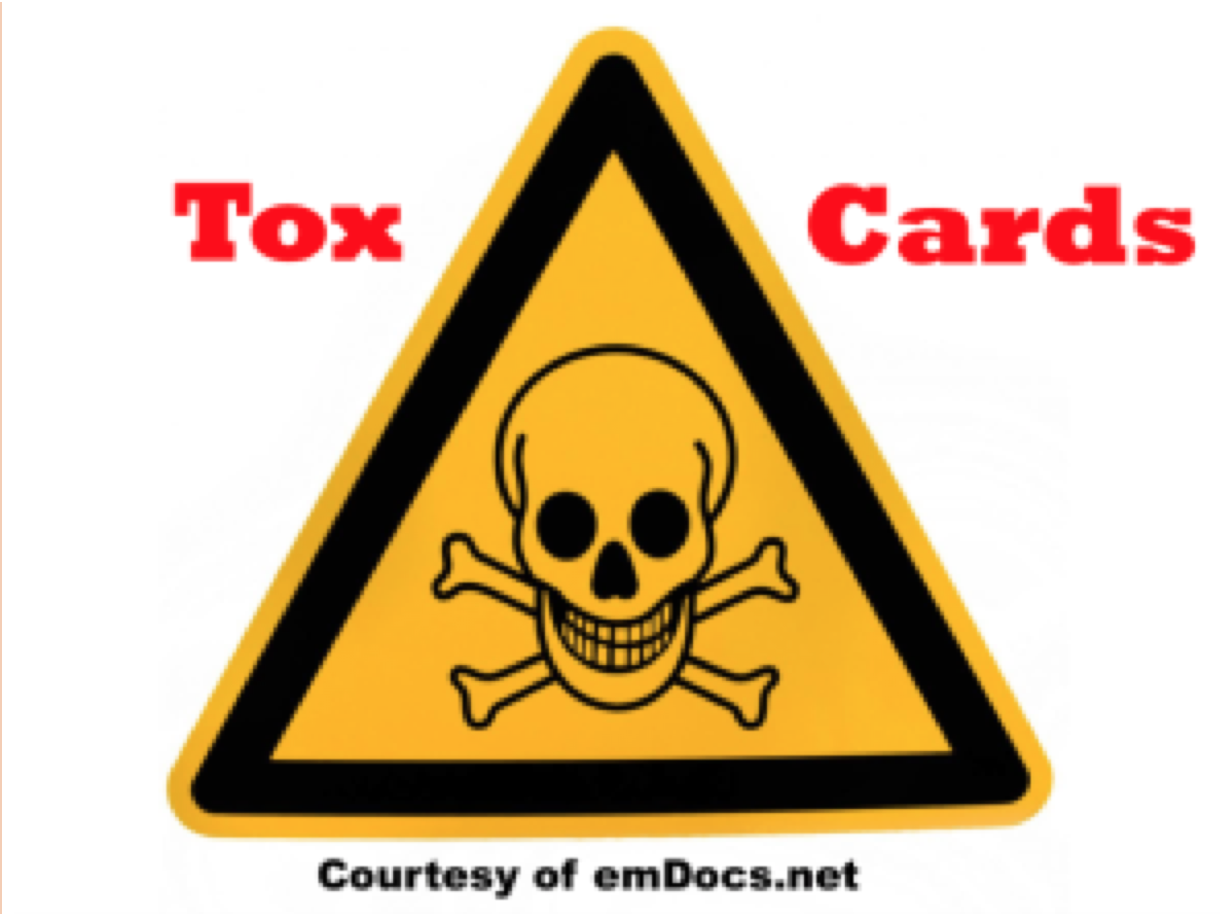Author: Peyton Jones MD (Medical Student, Emory University School of Medicine) // Edited by: Cynthia Santos (Senior Medical Toxicology Fellow, Emory University Hospital), Alex Koyfman, MD (@EMHighAK, EM Attending Physician, UT Southwestern Medical Center / Parkland Memorial Hospital) and Brit Long, MD (@long_brit)

Case:
29 y/o female with PMH of epilepsy and depression presents to the ED 45 minutes after ingesting 50 doses of sustained-release carbamazepine 400mg tablets in a suicide attempt.
Question:
What are the options for GI decontamination for poisoned patients?
Pearl:
The options for GI decontamination for poisoned patients are activated charcoal, gastric lavage and whole bowel irrigation.
Activated charcoal (AC) absorbs toxins via weak intermolecular (Van der Waals) forces and prevents absorption by the GI tract.
- AC should be given within one hour of ingestion but may be given later in anti-cholinergic ingestions resulting in delayed gastric emptying. AC is NOT an option in overdoses of heavy metals such as arsenic and iron, lithium, alcohols, acids, or alkalis. The charcoal will not bind to these substances (1).
Activated charcoal dose:
- <1 year of age: 0.5-1.0 g/kg (typical dose ranges from 10 to 25g)
- Children 1-12 years: 0.5- 1g/kg (typical dose ranges 25 to 50g)
- Adults: 1g/kg (typical dose ranges from 50 to 100g per dose)
- Multidose activated charcoal (MDAC) is recommended for drugs that have high enterohepatic circulation. Multiple-dose activated charcoal involves the administration of more than 2 doses of oral AC to enhance elimination of drugs.
- MDAC is recommended for life-threatening ingestions of carbamazepine, dapsone, phenobarbital, quinine, or theophylline. With all of these drugs there are data to confirm enhanced elimination, though no controlled studies have demonstrated clinical benefit. (2)
- Although volunteer studies have demonstrated that MDAC increases the elimination of amitriptyline, dextropropoxyphene, digitoxin, digoxin, disopyramide, nadolol, phenylbutazone, phenytoin, piroxicam, and sotalol, there are insufficient clinical data to support or exclude the use of this therapy in a position statement by AACT and EAPCCT.(2)
- The use of multiple-dose charcoal in salicylate poisoning is controversial and data from poisoned patients are insufficient presently to recommend the use of MDAC for these patients.(2)
- Absolute contraindications to charcoal include unprotected airway, intestinal obstruction or perforation, and decreased peristalsis.
Whole bowel irrigation (WBI) refers to the administration of osmotically balanced polyethylene glycol electrolyte solution to induce liquid stool and mechanically flush pills, tablets, or drug packets from the GI tract.
WBI Dose:
- 9 months- 6yrs: 500mL/hr
- Ages 6-12 yrs: 1000mL/hr
- >12 years of age: 1500-2000mL/hr
- Continue giving solution until the rectal effluent is clear.
- In a position statement by AACT and EAPCCT WBI should not be used routinely in the management of poisoned patients. No controlled clinical trials have been performed and there is no conclusive evidence that WBI improves outcome. WBI may be considered for potentially toxic ingestions of sustained-release or enteric-coated drugs.(3)
- There are insufficient data to support or exclude the use of WBI for potentially toxic ingestions of iron, lead, zinc, or packets of illicit drugs; WBI remains a theoretical option for these ingestions.
- A single dose of AC prior to WBI does not decrease the binding capacity of charcoal or alter the osmotic properties of WBI solution. However, administration of AC during WBI does appear to decrease the binding capacity of charcoal.
- WBI is contraindicated in patients with bowel obstruction, perforation, ileus, and in patients with hemodynamic instability or compromised unprotected airways.(3)
Gastric lavage (GL) refers to the passage of a large bore OG tube followed by repetitive instillation and aspiration of small aliquots of fluid in an attempt to aspirate pill fragments or toxins from the stomach. This is what the public refers to as stomach pumping.
- GL should be considered in situations where a patient has ingested a life-threatening amount of a poison and the lavage can take place within 60 minutes of ingestion.(4)
- Contraindications for GL include a compromised, unprotected airway and presence of GI hemorrhage or perforation. Relative contraindications include a corrosive substance, hydrocarbons, aluminum phosphide or in overdoses where there is an effect antidote as it is unnecessary.
- The benefit of gastric lavage has not been proven in randomized controlled studies although studies have shown that those treated with gastric lavage versus just activated charcoal had increased rate of intubation, ICU admission and aspiration pneumonia. (4)
Main Point:
The types of GI decontamination include activated charcoal, whole bowel irrigation, and gastric lavage. Activated charcoal is used within one hour of ingestion and is effective for most ingestions. Exceptions include caustic acids and alkalis, alcohols, lithium, and heavy metals (e.g. iron, arsenic). Multidose activated charcoal can be used in life threatening ingestions of carbamazepine, dapsone, phenobarbital, quinine or theophylline. Whole bowel irrigation is used to mechanically flush pills (especially extended release drugs), tablets, or drug packets from the GI system. Activated charcoal and whole bowel irrigation would be useful in this patient. Gastric lavage can be considered in a potentially life-threatening ingestion and the procedure can be completed within 60 minutes of the ingestion.
References/Further Reading:
- Olson, K. Acitvated Charcoal for Acute Poisoning: One Toxicologist’s Journey. J Med. Toxicol (2010) 6: 190-198.
- Position statement and practice guidelines on the use of multi-dose activated charcoal in the treatment of acute poisoning. American Academy of Clinical Toxicology; European Association of Poisons Centres and Clinical Toxicologists. J Toxicol Clin Toxicol. 1999;37:731-751.
- Position statement: whole bowel irrigation. American Academy of Clinical Toxicology; European Association of Poisons Centres and Clinical Toxicologists.Tenenbein M. J Toxicol Clin Toxicol. 1997;35(7):753-62.
- Vale J et al. Position paper: gastric lavage. American Academy of Clinical Toxicology. J Toxicol Clin Toxicol. 2004;42(7):933








